
Research
/Security News
Critical Vulnerability in NestJS Devtools: Localhost RCE via Sandbox Escape
A flawed sandbox in @nestjs/devtools-integration lets attackers run code on your machine via CSRF, leading to full Remote Code Execution (RCE).
This framework is simple and including full featured components of REST API, MVC framework, database management, web socket management and view with static, dynamic web pages. It includes socket management system, data driven REST API, static and dynamic views, friendly URL routing, validation, logging, REST API functionality testing module etc. This framework architecture is service handler oriented one and user can easily develop simple to complex level API functionality. Data management module handles data models with validation and sanitization, models retrieves the data from database using correct node modules. It is especially good for building REST API, multi room chat, virtual class room, real time scalable dashboards, multiplayer games and website with static, dynamic view based web pages. It is an extensible framework, user can easily extend the framework and rewrite functionality and change it according to their own needs.
Framework structure is shown in fig.
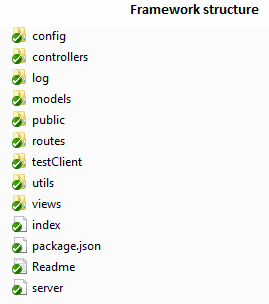
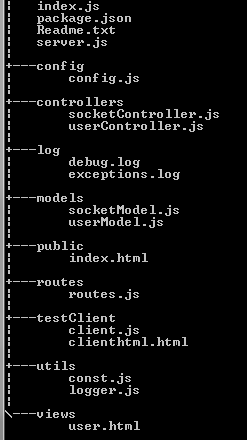
// global install
$ npm install -g xenops
Next we can use the commandline utility, type xenops in terminal and press enter, it will show how to use.
$ xenops
Please provide the app name. Usage - xenops [dirname] eg: xenops myapp
If you want to generate an application with Xenops, you should first navigate to the folder using cd command, where we want to create app.
Create application using Xenops commandline :
$ xenops appname
Xenops sample Framework structure created in appname.
Install dependencies:
$ cd appname && npm install
Run application :
$ npm start
Open the browser and type url :http://localhost:8888/ shows
Welcome to Xenops Framework
The structure of the files in an application is very important.It will help us to expand the current application structure by adding more modules and make an good app.
Before doing that one , we should clearly understand the basic structure and how to make simple api function using current app. We will separate core functions of our app into sensible and efficient file structure.
This framework contains some important modules,
This is the main configuration file (config/config.js) that contains all configurations needed for the entire application to work. DB config, server config, app config, socket config etc.
Restify server based routing configuration implemented.The file routes/routes.js file exports the Router object that handles all the route to application framework.
Node Restify server is used for framework development. server.js file is used to configure server, socket, and handlers.Once everything is configured correctly, you need to call initApp() function that will start application. There is one index file in the root folder and it is entry point of application and db connection, server initialisation start from here.This file will invoke the framework server and start application.
Just need to run node index.js (Development or production mode can set by using NODE_ENV)

and you can see that server is started.
Open the browser and type url :http://localhost:8888/
Gives : Welcome to Xenops Framework
This framework has separate directory structure for each file model, controller etc. Router routes the url to one function inside the controller. This framework structure contains controllers, models etc. Controller navigate through the application and handlers (functions) inside controller call the appropriate model and returns the data. Data is taken from models, models retrieves the data from database, for different database we have to use different node database modules. Here we have used the sql server node database module.
Socket io connection established through the same port used for api development. We have modularise the code to controller and model.There is no view present in this structured Framework.Here i am trying to explain code features of socket io programming and cool feature technology named web Real Time communication through code samples.
Node uses an event-driven, Non blocking I/O programming model and javascript is event driven language.One of the main feature of node js is event module, and EventEmitter class.Here i am not going to explain full server side code to implement multiple room real time communication. But I beleive that you will get a basic boilerplate for creating a multiple realtime communication.
In this socket io module implemented in socket controller, socket io configuration settings for the production and development are given.
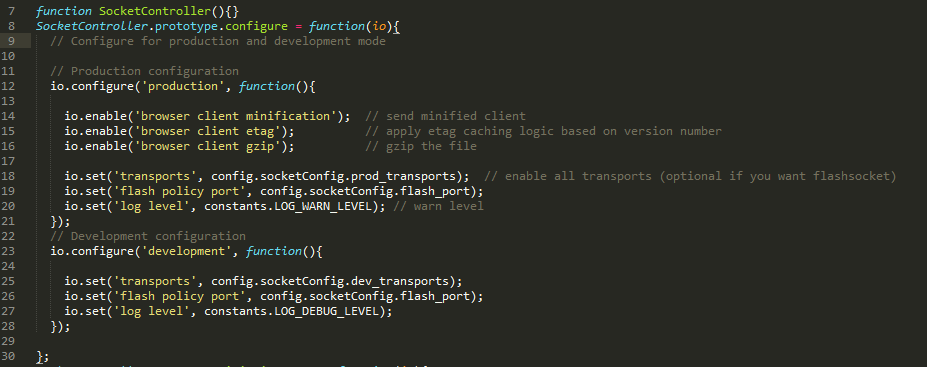 In the socket io programming socket has to listen for many events. We have created one custom event class to control socket events.
Socket Event listeners are added in controllers.
In the socket io programming socket has to listen for many events. We have created one custom event class to control socket events.
Socket Event listeners are added in controllers.
 Custom socket event class will handle all events and added in controller.
Custom socket event class will handle all events and added in controller.
// Event emitter Handler Obj
var socketEventEmit = require('../events/socketEventEmitter');
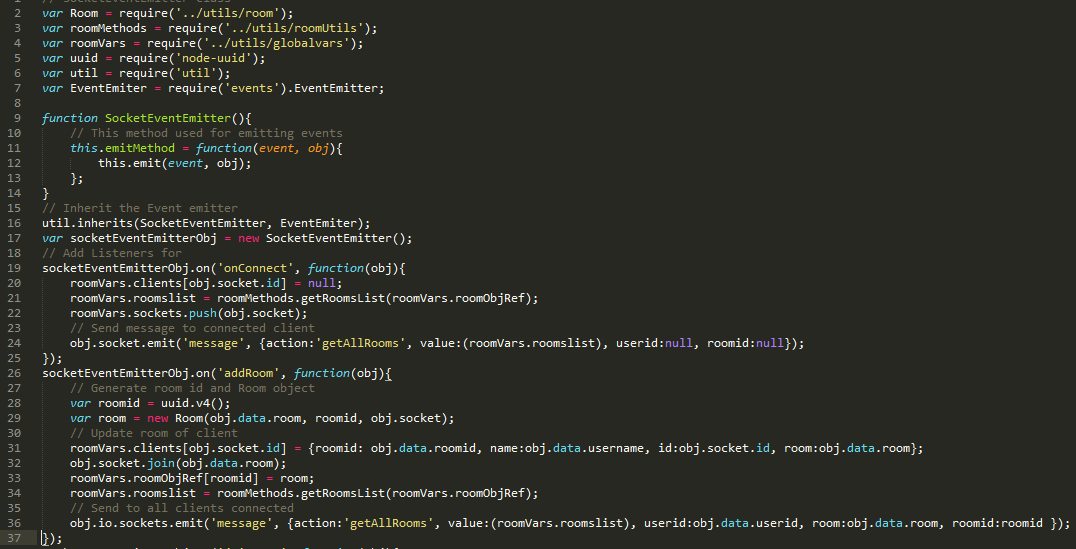
We have already mentioned that this framework is REST API based one and there is no view present in it. But in future we are looking for common framework for web based and REST API. For this one, we have started static and dynamic html page rendering using current framework.
// Custom controller routes
this.server.get('/staticview', this.controllers.custom.staticView);
this.server.get('/dynamicview', this.controllers.custom.dynamicView);
Static and dynamic page render handlers.
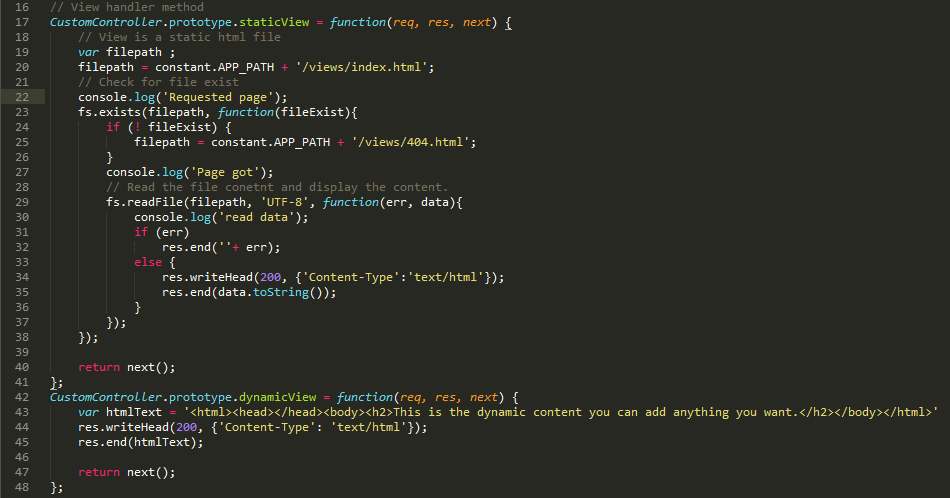
EJS is a very popular opensource javascript template library and used in this framework.
Add one index.ejs file in views folder.
<h1>Fingent Technology Solutions</h1>
<% if (data.length) { %>
<ul>
<% data.forEach(function(name) { %>
<li><strong><%= name %></strong></li>
<% }) %>
</ul>
<% } %>
Add new url route to routes.js
this.server.get('/template', this.controllers.custom.templateView);
template code for controller
CustomController.prototype.templateView = function(req, res, next) {
// Read it asynchronus mode
fs.readFile(constant.APP_PATH + '/views/index.ejs', 'UTF-8', function(err, templateStr){
if (err)
res.end(''+ err);
else {
var returnStr = ejs.render(templateStr, {
data: ['Fingent', 'Xenops', 'Framework']
});
res.writeHead(200, {'Content-Type': 'text/html'});
res.end(returnStr);
}
});
return next();
};
Open the browser and type -> http://localhost:8888/template shows

This is node js object relational mapping module named orm node module. The key feature of ORM is the mapping it uses to bind an object to its data in the database. ORM has the benefit of allowing you to more easily support more database engines. Currently it supports following DBMS
It has so many features
Add new url to routes.js
this.server.get('/getcustomers', this.controllers.custom.getAllCustomers);
A Model is an abstraction over one or more database tables. Models support associations. The name of the model is assumed to match the table name. Create model file customerModel.js and add code.
// Define customer model
module.exports = function(db){
var Customer = db.define('customer', {
name : String,
email: String
}, {
methods: {
getName: function(){
return this.name;
},
getEmail: function(){
return this.email;
}
}
});
return Customer;
};
customer is the table name and name, email are fields.
Drop this bits of code in /controllers/customController.js
CustomController.prototype.getAllCustomers = function(req, res, next){
res.writeHead(200, {'Content-Type': 'application/json'});
// ORM database connected
if (ormDb) {
var customerModel = require('../models/customerModel')(ormDb);
// To get all customers, {} for first customer {id: 1}
customerModel.find({}, function(err, customers){
if (err) {
console.log('DB Error ='+ err);
res.end(JSON.stringify(err));
return ;
}
// Print Collection of customer object
res.end(JSON.stringify(customers));
})
} else {
res.end('No database connection.');
}
return next();
};
Open the browser and type -> http://localhost:8888/getcustomers
[{"name":"John Luka","email":"luka@gmail.com","id":1},{"name":"Maria","email":"maria@gmail.com","id":2}]
results is the mysql table customer total records displayed as json.
Here we have already implemented a CRUD operation api functionalities using the current api framework.It includes user controller, model, routes etc.
In the current framework we are using winston log module.We can easily log the the info, error, warn and debug using this logger module.
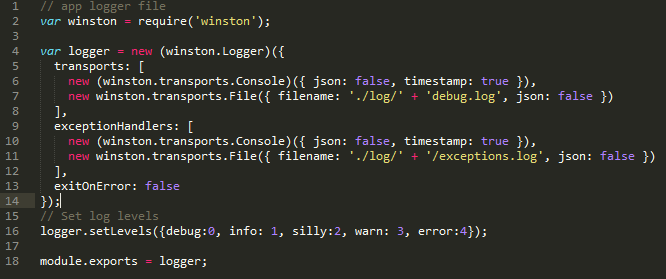
this file is stored in utils/logger.js file.In the application we can use like,
// Log information
logger.info('Application server started. ');
Two log files are created inside log folder for debug and exception log.
This module is very important one and it can be used for REST API functional testing. Here is one html and js file, html file is used for socket io connection testing and js file one is used for testing

How to use this one ?
var client = require('./testClient/client');
// call client
client.clientConnect();
client.getUsers();
Will output the results in console.
We present here a demo of single api function development using our own framework. Let’s begin.
create /controllers/customController.js file and update the file with above code and save it.
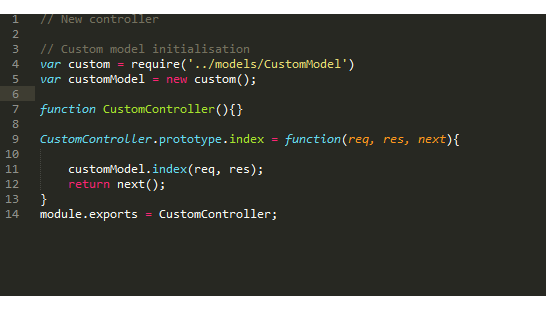

Drop this bits of code in models/customModel.js.

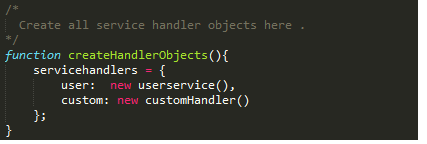
Update the server.js with code shown in above. Initialise service handlers with new custom controller object. Currently we are storing our action objects in service handlers object.
Edit routes\routes.js and update it.

Now everything is completed and the new REST API function developed using our own new structured framework. It is very simple.
Go to application folder -> cd appfolder
Start node server by typing - > node index.js
Open the browser and type -> http://localhost:8888/custom
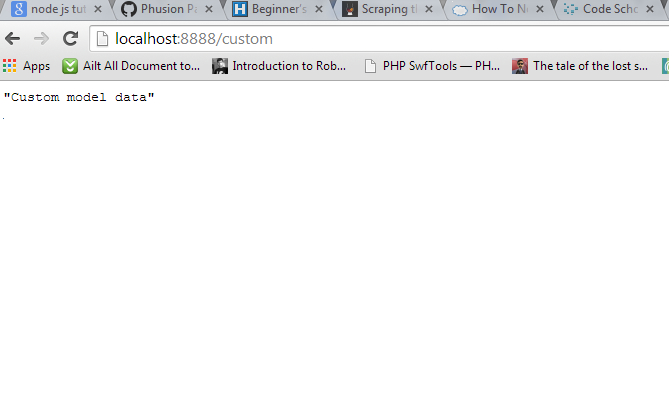
It is working fine. The above mentioned example is simple one. For database related method, you can check userModel.js file

Here we are using the sql server database and mssql node module included here and it is seperated from ORM module.
Based on the code you can get an idea of how to use different database engines inside our framework.
In the future we want our framework to include cool features like
FAQs
New REST API, Real Time, MVC framework
The npm package xenops receives a total of 2 weekly downloads. As such, xenops popularity was classified as not popular.
We found that xenops demonstrated a not healthy version release cadence and project activity because the last version was released a year ago. It has 1 open source maintainer collaborating on the project.
Did you know?

Socket for GitHub automatically highlights issues in each pull request and monitors the health of all your open source dependencies. Discover the contents of your packages and block harmful activity before you install or update your dependencies.

Research
/Security News
A flawed sandbox in @nestjs/devtools-integration lets attackers run code on your machine via CSRF, leading to full Remote Code Execution (RCE).

Product
Customize license detection with Socket’s new license overlays: gain control, reduce noise, and handle edge cases with precision.

Product
Socket now supports Rust and Cargo, offering package search for all users and experimental SBOM generation for enterprise projects.